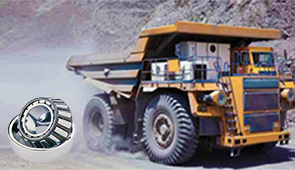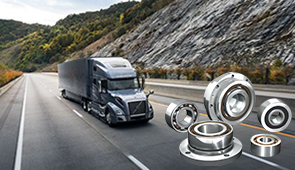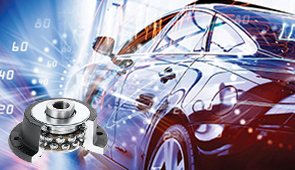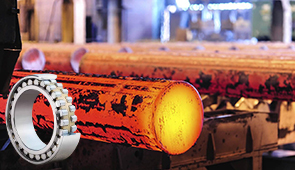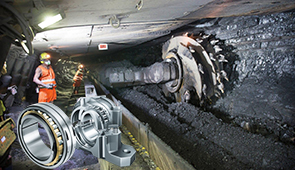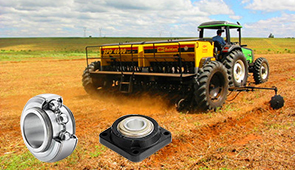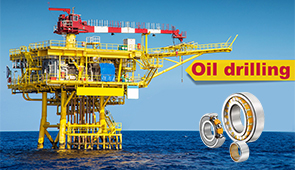Unlocking the Power of Rod End Ball Bearings: Your Ultimate Guide
Rod end ball bearings, also referred to as heim joints or rose joints, are highly versatile mechanical components integral to numerous engineering applications. These bearings are designed to provide articulated motion, manage significant load capacities, and operate effectively even in challenging environments. This guide aims to offer a comprehensive overview of rod end ball bearings, detailing their structure, functionality, materials, and diverse use cases. Engineers will gain valuable insights into the factors influencing bearing performance, selection criteria, and maintenance practices, ensuring optimal application in various mechanical systems. Whether you are working in automotive, aerospace, industrial machinery, or another field, this resource is crafted to equip you with the technical knowledge needed to harness the precision and reliability of rod end ball bearings effectively.
What are Rod End Ball Bearings and How Do They Work?
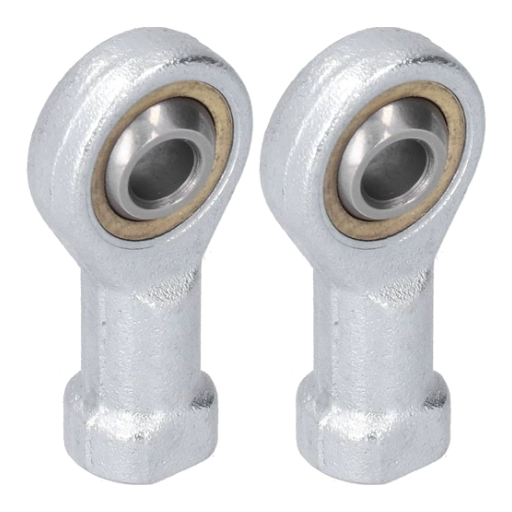
Understanding the Basics of Rod End Bearings
Rod end ball bearings, often referred to as heim joints or rose joints, are articulating mechanical joints capable of angular rotary movement and oscillatory motion. These components feature an inner ball that is spherically encased in a housing or outer ring, enabling rotation about multiple planes. This design makes them widely popular in automotive, aerospace, and industrial mechanical systems for linkage systems, control systems, and structures that require the parts to be precisely flexible and aligned with each other.
- Load Capacity: Commonly, static load capacity and dynamic load capacity are differentiated in load capacities. These load capacities check if the bearing will have any deformation or wear over time due to attire forces.
- Material Composition: Components that are required to not corrode, get scratched, or face any other wear and tear due to mechanical forces are usually made out of steel, stainless steel, or alloyed materials.
- Angular Range: Systems with certain motions need the bearings to have specific articulation degrees; therefore, the angular range of the bearing is very crucial.
- Thread Types and Sizes: To properly connect components that require attachment, imperial or metric thread standards must be used.
- Lubrication Requirements: For the passive mode of operation, the bearings can be pre-lubricated, or the bearings can have lubrication grooves for servicing.
- Operating Temperature Range: Depending on the material and design, the performance of the bearing is optimal under certain temperatures.
These factors are essential in choosing, developing, and servicing rod end ball bearings to maximize their service life and functionality concerning the mechanical systems.
Key Components: Ball, Housing, and Thread
The primary elements of rod end ball bearings—ball, housing, and thread—each play a distinct role in ensuring the mechanical integrity and performance of the component.
- Ball: The ball is the spherical element within the bearing that facilitates rotational or angular motion. It is typically manufactured from high-strength materials like steel or ceramic to withstand high loads and resist wear. If the ball’s hardness and surface finish are inadequate, it can lead to premature failure. Important parameters for the ball include its diameter, surface roughness, and material grade, which should align with the intended load and movement requirements of the application.
- Housing: The housing secures the ball and is generally made from durable materials such as steel alloys or aluminum for strength-to-weight optimization. It might also feature corrosion-resistant coatings to enhance durability in harsh environments. Key technical considerations for the housing include its internal geometry, which ensures a secure fit for the ball while allowing sufficient motion, as well as its external dimensions that must comply with the overall system design.
- Thread: The thread connects the bearing to the mechanical system. Depending on the application, threads can be right-hand or left-hand and typically adhere to standard thread dimensions for compatibility. The thread material must exhibit high tensile strength to manage the forces transmitted through the bearing. Parameters like thread pitch, diameter, and length are critical and should be verified against load and assembly requirements.
By meticulously evaluating these components and their respective parameters, such as material properties, geometric tolerances, and environmental compatibility, the performance and lifespan of rod end ball bearings can be maximized within any mechanical assembly.
Applications and Industries for Rod End Ball Bearings
Rod ball bearings are used worldwide because of their ability to accommodate misalignment, transmit load, and perform in diverse conditions. Some of the applications are in aerospace systems where they provide control linkages and actuation mechanisms that ensure precision and rigidity of movement. Their use is also very common across the automotive industry, especially in steering and suspension systems, where the parts are subjected to dynamic forces and require great strength and dependability. Other important industries are industrial machinery, robotics, and agriculture, where these bearings provide flexible motion and load control management in sophisticated structures.
- Load Capacity: Check static or dynamic load ratings to confirm that the bearing will not deform or fail under the applied forces.
- Thread Size and Pitch: Choose thread parameters that are appropriate for the assembly’s mechanical needs to allow for the proper fixing of the part.
- Material Composition: Use corrosion-resistant materials like stainless steel or zinc-plated alloys depending on the environment to which the part is exposed.
- Misalignment Angle: Describe the maximum misalignment tolerances accepted in applications dealing with nonlinear movement or structural changes.
- Lubrication Requirements: Decide if self-lubricating structures or friendly external lubrication will aid in the optimization of operational performance.
When these factors are matched with particular operational requirements, rod end ball bearings can function to the fullest and multiply their service life in many industrial applications.
How to Choose the Right Rod End Ball Bearing for Your Application?
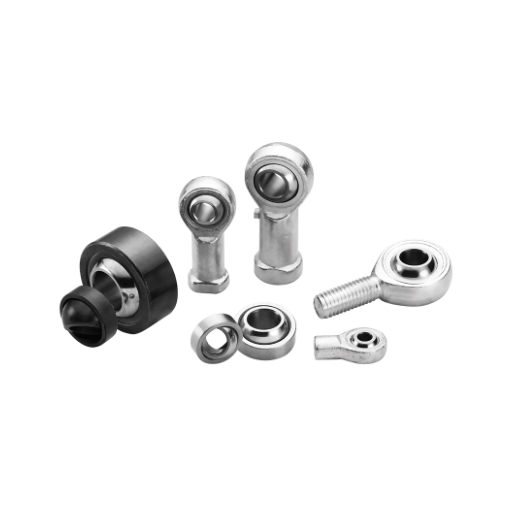
Factors to Consider: Load, Precision, and Environment
To describe the selection process I use to choose the right rod end ball bearing, let’s begin with defining the top three areas of concern for me: load, precision, and environment.
- Load: I first look at the type of load applied – its nature or type and level – radial, axial, or a mix of both. When it comes to heavy dynamic loads, I always seek for the bearings that have variable static and high dynamic load measurements, which are usually stated in Newtons. For instance, if the application requires a constant radial load of 5000 N with a possibility of an axial force, then I always recommend looking for a load bearing that has a relatively high value load capacity for axial forces to be on the safe side.
- Precision: Precision, on the other hand, is paramount for alignment and movement. Depending on the application accuracy requirement, I set forth to determine the expected ranges and standards that should be classified under ISO or ABEC classification systems. For some of the demanding applications, I select an ABEC-5 bearing or ISO P5-rated elements for best accuracy and overall performance.
- Environment: Environmental factors, such as moisture, temperature, and exposure to contaminants, are a major point of concern for me. When dealing with a high-temperature environment, I focus on bearings that withstand extreme conditions; generally, I aim for ranges from -30 C up to +200 C or even more based on the materials’ limitations. In corrosive environments, my bearings of choice are stainless steel ones or those with anti-corrosive coatings.
Evaluating these factors in depth and correlating them with my operational requirements helps me make informed decisions regarding the attainment of reliable operation for the bearing in question.
Self-Lubricating vs. Metal-to-Metal Bearings
Self-lubricating bearings require less maintenance because they are filled with enough lubricant to keep them operational with no external lubrication. These bearings are ideal for applications that cannot be continuously lubricated or where the possibility of contamination must be kept at a minimum. Self-lubricating bearings work well under moderate load and speed conditions, typically up to 10 – 50 MPa of load and operating temperatures up to +250°C, depending on the composition of the bearing material.
On the other hand, metal-to-metal bearings offer superior strength and durability, making them ideal for high-load impacting applications. They outperform under all heavy operational conditions, frequently over 100 MPa of load, and can endure severe environmental conditions, including higher operating temperatures, which can be up to +400°C with certain materials and lubrication. However, these bearings have a downside of requiring routine lubrication maintenance to sustain challenging conditions with minimal wear.
For a low-maintenance operation where self-lubricating bearings can meet the load demands, these are more suitable. For high-stress working environments with exceeding load demand and exceptional mechanical strength requirements, metal-to-metal bearings are justified.
What Are the Different Types of Rod End Ball Bearings Available?
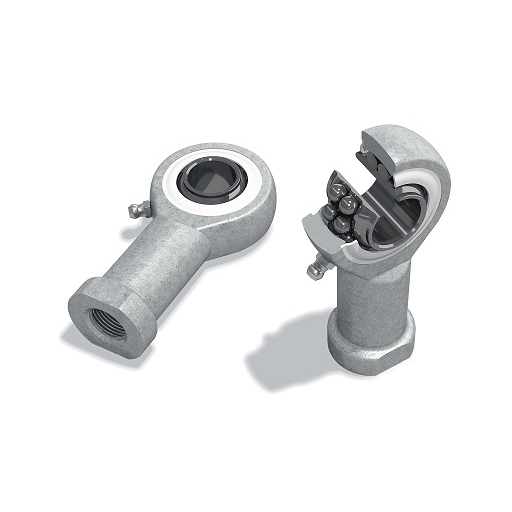
Spherical Bearings and Heim Joints: Understanding the Differences
Although Heim joints and spherical bearings serve different functions, they are alike in design systems. Spherical bearings are developed for rotary functions and to accommodate any angular misalignment. These devices use a spherical inner ring and an outer ring that help facilitate motion under extreme conditions. Several bearings of this variety are made to order and have both high load tolerances and high material composition. Depending on their composition and design, wearable rugged case structures can experience a load of anywhere between 10KN to 250 kN.
On the contrary, Heim joints are specialized rod ends that are button-controlled or utilized directly for linear actuating motion. They are a combination of a swivel ball and a threaded casing, which has simplified their integration into mechanical systems and made them far more user-friendly. Some of the technical parameters governing the application of Heim joints include thread size M4 to M30, operating angles of 10° to 25° with varying degrees of tilt, and a host of differences and increasing load supplies of the given apparatus. The ease of tilting and clamping the head makes them applicable in precisely turned dynamic link mechanisms.
In the case of Heim joints, structures and devices of greater technological sophistication and spherical bearings, the durable elements that give high tolerable wear to misalignment within the structure as well as the elements that require less restriction within the structure provide dominant focus on components. The use and one’s objectives determine the strictness level at which they are integrated into the system.
PTFE-Lined and Corrosion-Resistant Options
The options that are PTFE-lined and corrosion-resistant are meant to improve the lifespan and functionality of joints and bearings in harsh conditions. PTFE (Polytetrafluoroethylene) linings reduce friction on the surface, which leads to less wear and extends the life of highly stressed components. These linings are particularly effective at reducing the need for lubricants, thus making them desirable where maintenance is hard to access.
Corrosion-resistant materials like stainless steel or zinc-plated coatings will increase resistance in harsher conditions, including moisture, chemicals, or saline environments. For such applications demanding both aspects, marine, aerospace, and industrial machines benefit from the combination of PTFE coatings and corrosion-resistant elements.
- Coefficient of Friction – PTFE Lining: From 0.05 to 0.2 is common, but it relies on the operational load.
- Operating Temperature Range: PTFE can work in a temperature range of -200 °C to +260 °C.
- Corrosion Resistance Standards: Materials are capable of meeting requirements for salt spray corrosion test ASTM B117 or relevant ISO standards depending on environmental conditions.
- Load Ratings: These must be determined by the dynamic and static load capabilities of the lining and base material in terms of certain industry standards.
These features ensure that the components meet rigorous industrial and environmental requirements tailored to specific operational demands.
How to Properly Install and Maintain Rod End Ball Bearings?
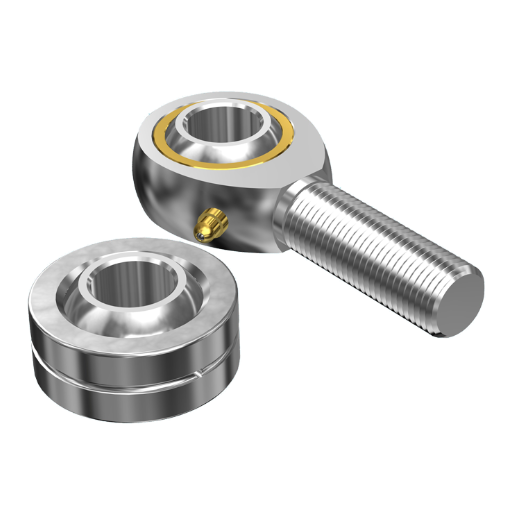
Step-by-Step Installation Guide
- Inspection of Components: Check that all parts, such as the rod end ball bearings, housings, and connecting part,s are free of damage and meet the basic requirements. Examine areas of PTFE lining for any irregularities per load rating criteria and verify proper corrosion resistance compliant with ASTM B117 or ISO standards.
- Preparation of Mounting Area: Remove any dirt, pollutants, or contaminants from the area to be mounted to ensure proper installation. Check that the mounting faces are in position and within the specified technical tolerances of the design requirements.
- Alignment and Fitting: Bring the rod end bearing in line with the part to which it is to be fitted. Ensure that the installation angles do not exceed the allowable limits so as not to induce undue stress or rotational misalignment. To avoid inflicting excess pressure on the assembly, which might raise the stress on the PTFE lining beyond acceptable limits, apply adequate compression to the bearing when fitting it into the assembly.
- Fastening the Assembly: Position the bearing in the intended place and tighten with adequate fasteners. Make sure that the amount of torque used falls within the limits of the instructions provided by the manufacturer so as not to damage the lining or reduce the dynamic load capacity.
- Operational Testing: This testing is performed following the setup and consists of checking if the assembly moves freely without any binding or excessive free-play. Furthermore, check whether the whole system works within the specified temperatures of -200 °C to +260 °C and achieves the load requirements.
By following this guide, the maintenance and idle times for the rod end ball bearings are reduced, as these bearings provide the maximum performance throughout their service life.
Maintenance Tips for Prolonged Bearing Life
Implementing maintenance measures will help sustain rod end ball bearings’ performance and longevity. I recommend the following tips:
- Lubrication Schedule: Lubrication must be performed as dictated by the operational conditions. For high-load, high-speed operations, check the lubricant level every 500 hours of operation and replenish if necessary. Use approved lubricants and greases to ensure chemical compatibility.
- Inspection Intervals: These components should be visually inspected every three months. Review for corrosion or abnormal wear, as well as contamination. For assemblies that operate in severe conditions, monthly inspections should be considered.
- Load and Alignment Monitoring: Check the alignment of the rod end ball bearings with the associated parts periodically to ensure there are no imbalances in the load that can potentially damage the apparatus. Avoid overloading the components beyond the rated dynamic and static load of the bearing (25 kN dynamic, 45 kN static).
- Operational Environment Control: Limit contact with excess bale moisture, dirt, and aggressive chemicals, which can compromise the steel and PTFE lining. Maintain working temperatures at the range of -200 °C to +260 °C.
- Replacement Planning: Remove and replace the bearings at the first indication of coating wear, liner wear, or mechanical damage to avoid severe system failures. Always substitute parts that meet or exceed the specifications from the OEM.
Following these typical practices allows an increase in the performance and life of the bearings while minimizing maintenance times and ensuring proper operation of the system.
What Are the Latest Innovations in Rod End Ball Bearing Technology?
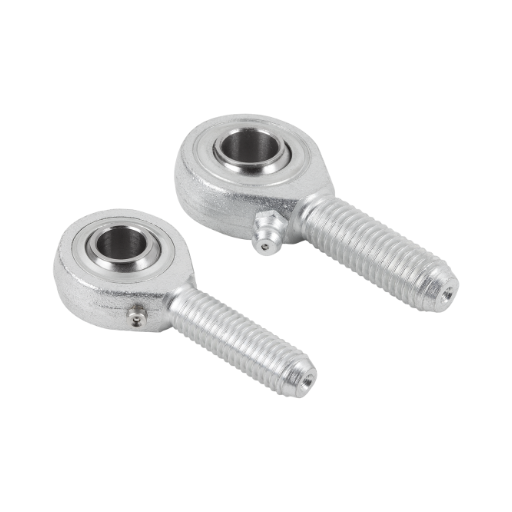
Advancements in Materials and Coatings
With the progression of technology, new materials and new coatings are being applied on rod end bearing balls to enhance their durability, functioning, and general performance in demanding conditions. The new high-strength alloys and composite materials, along with sophisticated steel alloys that have high tensile strength and fatigue resistance, are some of the most important developments. Now, there is a proliferation of lightweight composites in the aerospace sector, which reduces the overall weight of the system without compromising on the strength, making it easier to harness.
There has also been great progress in coating technology, especially regarding the creation of protective surfaces that employ low-friction techniques. Tough environments, such as those that are high in corrosiveness or suffering from excessive erosion, tend to require specialized coating. These coatings can increase the strength of the surface being worked on and also reduce the friction coefficients. For Example:
- Corrosion-Resistant Coatings: These could be utilized in almost all industries, especially in harsh marine environments or chemical processing situations because Chromium-based and nickel phosphorus coatings can improve the service life exponentially.
- Low-Friction Solutions: The self-lubricating PTFE lowers the friction being rebated to the operational parts along with molybdenum disulfide coating, which greatly reduces wear.
In addition, manufacturers are moving towards the utilization of nano-engineered surface treatments to strengthen the uniformity as well as the adhesion of the coatings. These strengthen the coatings, ensuring that they work perfectly in different conditions. All of these advancements significantly increase the load-bearing capability, efficiency, and lifecycle. Altogether, these advancements make a leap in technology regarding reliability in the most critical bearing situations.
Custom Solutions for Specific Applications
Various industries often require customized surface treatments due to their specific operational needs. To meet these requirements, custom applications with particular advanced features for optimal performance are systematically worked on.
- Applications Involving Extreme Temperatures: Coatings based on ceramics or thermal barrier coatings (TBCs) may be used for environments exceeding 600°F (315°C). These coatings are thermally resistant and mitigate heat transfer.
- Rugged Conditioning: Abrasive materials lead to severe erosion in mining or manufacturing industries. Excellent wear resistance can be further improved with Tungsten carbide coatings. Application layer thickness for this coating exceeds 1200 HV and is approximately 100 to 200 microns.
- Requirements For Conduction: For the level of conductivity necessary in electric components or aerospace parts, silver or gold electroplating is preferred. Ensure sufficient conductivity with a parameter of 63 10⁶ S/m for silver while having uniform deposit thickness of 5 to 15 microns.
- Corrosion Protection in Sub-Sea Environments: To mitigate severe exposure to marine conditions, multilayer nickel or ceramic-epoxy hybrid coatings are utilized.
Manufacturers are increasingly integrating advanced techniques such as plasma-assisted deposition or laser cladding to enhance the precision and performance of these solutions. For specific applications, it is essential to define performance benchmarks and validate them through rigorous testing processes.
Frequently Asked Questions (FAQs)
Q: What is a rod end ball bearing, and how does it function?
A: A rod end ball bearing is a mechanical articulating joint used to provide a connection point between components. It is designed to accommodate angular misalignment and is commonly used in linkages, tie rods, and control rods. The ball joint within the bearing allows for self-aligning movement while maintaining a secure connection.
Q: How can I select the right rod end ball bearing for my needs?
A: Selecting the right rod end ball bearing involves considering factors such as load capacity, operating environment, and required range of motion. Utilizing a resource library or consulting with a catalog can assist in bearing selection. For specific guidance, contact us to speak with a customer service representative.
Q: What are the customization options available for rod-end ball bearings?
A: Customization options for rod end ball bearings include custom-engineered solutions tailored to specific application requirements. Manufacturers often offer a wide range of products that can be configured to meet unique customer needs, ensuring compatibility with various high-technology markets.
Q: How does the loader slot function in rod-end ball bearings?
A: The loader slot in rod end ball bearings is designed to facilitate the insertion of the spherical ball into the housing. This feature allows for easy assembly and maintenance, enhancing the overall functionality of the bearing.
Q: Can rod-end ball bearings be used in high-load applications?
A: Yes, rod end ball bearings can be used in high-load applications by selecting bearings specifically designed for such conditions. These bearings are engineered to handle high stress and provide reliable performance in demanding environments.
Q: What should I consider when identifying and developing a unique rod end ball bearing configuration?
A: When identifying and developing a unique rod end ball bearing configuration, consider factors like load requirements, environmental conditions, and movement constraints. Collaborating with a new product development center can provide insights and assist in creating a solution that meets specific application needs.
UCTH213-40J-300 with Setscrew(inch)
CNSORDERNO: Normal-duty(2)
TOGN: UCTH213-40J-300
SDI: B-R1/8
SD: 2 1/2
UCTH212-39J-300 with Setscrew(inch)
CNSORDERNO: Normal-duty(2)
TOGN: UCTH212-39J-300
SDI: B-R1/8
SD: 2 7/16
UCTH212-38J-300 with Setscrew(inch)
CNSORDERNO: Normal-duty(2)
TOGN: UCTH212-38J-300
SDI: B-R1/8
SD: 2 3/8
UCTH212-36J-300 with Setscrew(inch)
CNSORDERNO: Normal-duty(2)
TOGN: UCTH212-36J-300
SDI: B-R1/8
SD: 2 1/4
UCTH211-35J-300 with Setscrew(inch)
CNSORDERNO: Normal-duty(2)
TOGN: UCTH211-35J-300
SDI: B-R1/8
SD: 2 3/16
UCTH211-34J-300 with Setscrew(inch)
CNSORDERNO: Normal-duty(2)
TOGN: UCTH211-34J-300
SDI: B-R1/8
SD: 2 1/8









